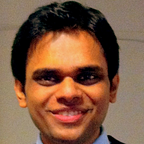A massive online thermodynamic experiment
I am going to embark on an interesting adventure running a massive online open course (MOOC) on thermodynamics. I will write a series of posts covering my experiences in putting this together and running the course.
It now feels like ages ago, when I was listening to my friend, Frank Wang narrating about his experiences helping Dan Boneh teach his crypotography class on Coursera. This planted the first seeds in my head about online learning; but I was still a PhD student at this point. This was a focal point of discussions during my faculty interviews but it was still not entirely clear to me how to manage such an effort. In addition, all the associated questions an academic has about online education: Where is this online learning going? Is it going to be disruptive?
This was when I chanced upon a video by Clayton Christensen about disruption in higher education. I learnt from this set of lectures that a key element of disruption that leads to the downfall of many successful and seemingly invincible organizations is that an innovation that makes a complicated and expensive product simpler. These innovations typically capture the lowest end of the market, slowly moving up-market and ultimately pinning the original leaders to the highest tier of the market where there is simply not enough volume to sustain them all.
Higher education seems to be facing such a situation where the costs of higher education has grown to such an extent that the online-only course providers have the ability to disrupt by exploiting innovations such as low-cost delivery modes of content, high-quality low-cost video conferencing as well as computer simulations as virtual substitutes for laboratories.
I was completely convinced that at least I wanted to try it; explore whether it could be disruptive or not for myself. Of course, there were many things that needed to come together for this to work out.
The right course: As I mentioned in my earlier post, I got an incredibly lucky course assignment. I was allowed to teach graduate thermodynamics and I felt like this would be a great class to flip and turn into an online course. This was further affirmed by my discussions with Chris Cramer, who runs a version of this class called Statistical Molecular Thermodynamics.
Funds: This was going to be challenging since a traditional massive online open course (MOOC) had not been done before at Carnegie Mellon. Doing this right would take quite a bit of resources. Luckily, I had the support of my department head through a departmental fellowship and support from the newly created Simon Initiative at Carnegie Mellon.
Acatar: This was the last piece that came together. The Engineering school had signed a deal with Acatar to create flipped classes. I took the plunge, decided to flip my fall class and run a smaller version of this as a MOOC on Coursera. They were on-board. This is the key piece that has helped tremendously.
The course page is live here. Join us on this thermodynamic adventure!
